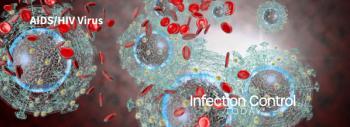
Bacteriophage Treatment Decontaminates Infant Formula
A phage -- viruses that infect only bacteria -- showed strong antimicrobial activity against a type of food-borne bacterium that often kills infants after infecting them via infant formula. The research was published Oct. 23 online in Applied and Environmental Microbiology, a journal of the American Society for Microbiology.
In the study, the phage, called "CR5," showed high antimicrobial activity against the bacterium, Cronobacter sakazakii, as well as against several other species of Cronobacter, which can also cause dangerous illness, says coauthor Sangryeol Ryu, professor in the Department of Agricultural Biotechnology at the Research Institute of Agriculture and Life Sciences based at Seoul National University in Korea.
The research was conducted using infant formula that had been contaminated with C. sakazakii. "Interestingly, CR5 killed C. sakazakii quickly, and no C. sakazakii was detected in the infant formula after 10 hours had passed," said Ryu.
Ryu said that the phage is safe for humans, noting that his analysis of its genome revealed neither toxin gene nor virulence factor. In 2006, the US Food and Drug Administration approved the use of bacteriophages as biocontrol agents in foods. But the agency does not allow the use of antibiotics in infant formula.
Bacteriophages are abundant in the environment, which means they are ecologically friendly, said Ryu. "They infect and kill only bacteria, which means they could be used as novel biocontrol agents and even as natural food preservatives," he added, noting that other food-borne pathogens could also be controlled, by other types of phages.
Cronobacter, the target bacterial genus of the phage, CR5, is a family of closely related species that cause illness in people of all ages. While infection is rare in the US, these bacteria kill up to 40 percent of infected infants. Additionally, those that survive can face long-term neurological problems, according to the Centers for Disease Control and Prevention.
"Heretofore, C. sakazakii-contaminated infant formula has been considered an unsolved problem because antibiotics cannot be used," said Ryu, adding that C. sakazakii has been known to have multiple antibiotic resistance genes. "In this study, we proved that C. sakazakii-phage CR5 is an efficient biocontrol agent in infant formula. Therefore, this bacteriophage treatment is a promising approach to solve this problem."
Source: American Society for Microbiology
Newsletter
Stay prepared and protected with Infection Control Today's newsletter, delivering essential updates, best practices, and expert insights for infection preventionists.






